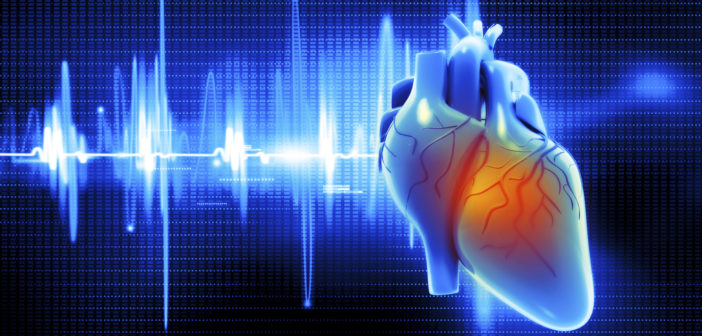
Jiancheng Ye, a third-year student in Feinberg’s Health Sciences Integrated PhD Program, was the author of a paper recently published in the Journal of the American Medical Informatics Association which explores how to address clinician burnout prompted by the integration of patient-integrated data in electronic health records (EHRs).
Ye said he is interested in the intersection of informatics, health quality and patient safety. Originally from Chongqing, China, Ye completed his undergraduate studies in biomedical engineering at Tsinghua University in Beijing and earned his master’s degree in health informatics at Johns Hopkins University.
Ye’s doctoral thesis will explore how health informatics tools can help primary care providers better care for patients with chronic diseases, especially cardiovascular disease, and works closely with Mark Huffman, MD, MPH, the Quentin D. Young Professor of Health Policy and director of the Center for Global Cardiovascular Health, Abel Kho, MD, director of the Institute for Augmented Intelligence in Medicine, Theresa Walunas, PhD, assistant professor of Medicine in the Division of General Internal Medicine and Geriatrics, and Justin Starren, MD, PhD, chief of Health and Biomedical Informatics in the Department of Preventive Medicine and director of the Center for Biomedical Informatics and Data Science.
Read a Q&A with Ye below.
Why did you choose Feinberg?
I pursued my PhD at Feinberg because it is one of the most famous medical schools in the United States and in the world. Feinberg enables me to work with diverse research teams and expose me to collaborative research in practice. The reason I choose this program is because it’s a very interdisciplinary program where I can gain a lot of knowledge and skills about different disciplines like informatics, health care quality, epidemiology and public health. Within this very interdisciplinary environment, I can engage with various faculty who have different backgrounds, and that helps me to explore my research fields. Last year, I worked with two medical students and participated the Student Design Challenge at the American Medical Informatics Association Annual Symposium, and we were one of the five awardees in that competition.
What are the benefits of integrating patient-generated health data into EHRs?
Patient-generated health data, such as patient-reported outcomes and mobile health data, have been increasingly used to improve healthcare delivery and outcomes. Integrating patient-generated health data into EHRs further expands the capacity to monitor patients’ health status without requiring office visits or hospitalizations. By reviewing and discussing patient-generated health data with patients remotely, clinicians could address the clinical issues efficiently outside of clinical settings. Especially during the COVID-19 pandemic, healthcare providers have been forced to get closely acquainted with remote care and telehealth. Leveraging patient-generated health data has introduced benefits for both patients and providers.
How does this contribute to clinician burnout?
Clinician burnout is not just a syndrome of emotional exhaustion, but also a type of cynicism about job responsibilities. Integrating patient-generated health data into EHRs would bring in more data, and healthcare providers may have to spend extra time and efforts to manage and review the data. In this study, I examined how interactions with EHR-integrated patient-generated health data might result in clinician burnout and identified three potential contributing factors, including technostress, time pressure and workflow-related issues.
What is the FITT (Fit between Individuals, Task and Technology) framework?
This framework was initially developed by professor Elske Ammenwerth to evaluate IT adoption. I modified and applied the framework to identify the three contributors for clinician burnout: technostress, time pressure and workflow-related issues.
There are three constructs of this FITT framework: task, technology and the individual. Technostress may happen when clinicians use new technologies, such as patient-generated health data. If patient-generated health data does not go through smoothly or as planned, additional time would be needed from healthcare providers to provide quality care. Also, time pressure is an important source of job dissatisfaction in many domains of healthcare settings. Despite the merits of patient-generated health data -EHR integration, it may also contribute to information overload. Lack of interoperability is another concern. Third-party platforms may create new systems outside of the EHR or healthcare providers’ working systems, leading to fragmented information sources that can be burdensome to the providers who have to check multiple sources of data before making a clinical decision.
This framework helped me to map these barriers and propose recommendations to the underlying issues of using EHR-integrated patient-generated health data.
How can each of these contributors to burnout be addressed?
For technostress, improving the usability and usefulness of the EHR-integrated patient-generated health data systems can help reduce technostress. Providers always feel frustrated and anxious about the unfamiliar interfaces and insufficient instructions. If they find it easy and comfortable to review and interpret patient-generated health data, then burnout will decrease. The development and application of the FHIR (Fast Healthcare Interoperability Resources) data standard have offered opportunities to improve patient-generated health data presentation and visualization. To avoid unrealistic expectations, patients and providers should be mutually aware of each other’s needs. This bi-directional relationship can be achieved by adding some communication mechanisms in the integrated system. I indicated that technostress could also be reduced by education and training, which should be incorporated into medical boards and continuing education.
For time pressure, the EHR systems could develop standardized templates and data types for patient-generated health data integration, so that providers could check the standardized summaries without spending time sifting through patient-generated health data. Financial reimbursement is important to relieve time pressure. Reimbursement models should align with the use of patient-generated health data. Incorporating artificial intelligence and algorithm-based approaches into the EHR-integrated system would enable intelligent filters and customizable alerts for clinicians, providing critical and digestible information rather than large volumes of data. I have been working on this area and have developed machine learning models and patient phenotypes to support clinical decision-making.
For workflow-related issues, making workflows automatic may ease the clinical operations and decreases clinicians’ workload. Clinicians may just want to click on a few buttons, and all the necessary results would pop up. Health systems should regularly evaluate the impact of the EHR-integrated patient-generated health data on clinicians, eliminate redundancies and simplify the workflows. Examples include building systems that allow for inter-professional sharing of relevant work, using organization-level rapid-cycle improvement approaches to do outcomes-driven workflow redesign, or streamlining the process of the integration and application of patient-generated health data and EHR. The implementation, evaluation and upgrade of EHR-integrated patient-generated health data systems should incorporate the perspectives of the frontline end users, including clinicians and patients, for human-centered design.






